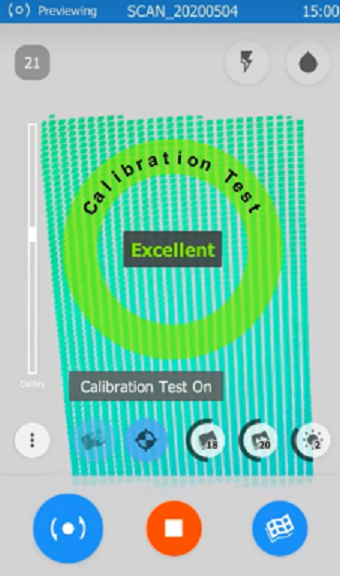Moscow-headquartered Thor3D continues to refine its software and hardware, allowing customers around the globe to continue scanning items at every range, from smaller industrial parts to facial prosthetics, and larger-scale items like automobiles. Now, the handheld 3D scanner developer is releasing an update to its Calibry Nest software—adding a host of new features for improved workflow.
Continuing to develop and enhance products and solutions that offer ease in capturing 3D data, as well as dealing with post-processing, the team at Thor3D has created a Live 3D option for preliminary data finalization. This means that users are able to use the Live3D feature while scanning and then quickly complete assembly of the scene, even while on the go. They can then assess the quality of the scan before uploading it to their PC.
For Calibry users who seek the ultimate in accuracy, they can also now test calibration before beginning any project.
Other tools have been added to this release for streamlined workflow during post-processing efforts. Users engaged in reverse engineering or quality control processes can complete basics like the following:
- Pinpointing deviations in structure by comparing meshes with the Distant Map feature.
- Cutting sections through any type of mesh for adding 2D contours which can then be converted into .SVG or .DXF format.
- Using the inverting tool, noted as especially helpful for engineers involved in orthopedic or prosthetic applications where critical scans are required for body parts.
- Calculating the least amount of distance from two points with the ‘Geodesic Distance’ tool, for use with polygon mesh.
- Detecting false markers during scanning. The Thor3D team notes that while ‘momentary glares’ may occur in the final mesh and look like markers (thus causing inaccuracies), this additional tool prevents such problems.
“Thor3D team has also added a random generator of names to label each new result as they are formed,” states a recent press release sent to 3DPrint.com.
Other small changes have been made to the Calibry Nest software also. Users can now accelerate the speed of loading textured models. A new progress bar has been added for hole-filling functions, with separated hole filling now available in a different thread—leading to further optimization of the workflow. The tracking process has also been further improved for users during the scanning process.
Currently, Thor3D has offices in both Moscow and Dusseldorf. Founded in 2015, the Thor3D team is well-known for the development of their wireless, handheld scanner. Find out more about their products here.
What do you think of this news? Let us know your thoughts! Join the discussion of this and other 3D printing topics at 3DPrintBoard.com.
[Source / Images: Thor3D]Subscribe to Our Email Newsletter
Stay up-to-date on all the latest news from the 3D printing industry and receive information and offers from third party vendors.
You May Also Like
Further Understanding of 3D Printing Design at ADDITIV Design World
ADDITIV is back once again! This time, the virtual platform for additive manufacturing will be holding the first-ever edition of ADDITIV Design World on May 23rd from 9:00 AM –...
3D Printer Maker EVO-tech Reborn as NEVO3D — Once More With Feeling
EVO-tech was a 3D printing service and original equipment manufacturer established in 2013 and based in Schörfling am Attersee, Austria. The company produced high-quality material extrusion systems featuring linear bearings,...
3D Systems Brings 3D Printed PEEK Cranial Implant to the U.S. with FDA Clearance
For more than 10 years, 3D Systems (NYSE:DDD) has worked hand-in-hand with surgeons to plan over 150,000 patient-specific cases, and develop more than two million instruments and implants from its...
CDFAM Returns to Berlin for Second Annual Symposium
The second CDFAM Computational Design Symposium is scheduled for May 7-8, 2024, in Berlin, and will convene leading experts in computational design across all scales. Building upon the first event...




































